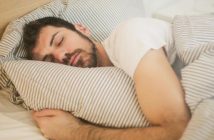
A few months ago, I stumbled across a blog called Crunchy Betty while searching for natural blackhead-clearing solutions (don’t judge me). The author, Leslie Martin, shares recipes for scrubs, cleansers, and masks made with ingredients found in the pantry.
As someone who has always struggled with sensitive skin, I was instantly hooked. Crunchy Betty also spoke to my growing awareness of the chemical cocktails found in conventional beauty products.
For instance, I was shocked to discover that my "natural" Kiehl’s Blue Herbal gel moisturizer was rated 10 out of 10 for ingredient toxicity – 10 being the worst – on the Think Dirty app. The ingredients are rated according to "carcinogenicity, developmental/reproductive toxicity, allergenicity, and immunotoxicity" and product evaluations are performed by experts in medicine, biochemistry, environmental toxicology, and more.
Potentially harmful ingredients in my moisturizer included butylparaben, a preservative listed as a likely endocrine disruptor by the Environmental Working Group (EWG) Skin Deep database. Another endocrine disruptor, methylparaben, has been found to build up in breast tissue and is thought to accelerate the formation of breast tumors.
I currently use Crunchy Betty recipes two to three times a week as part of my regular skincare routine. There were a few extra ingredients I had to buy on Taobao, like jojoba oil, almond meal, and witch hazel. Eventually, I plan to phase out most conventional beauty products and rely mainly on DIY products.

My morning routine is based on this Crunchy Betty post and uses the following ingredients:
- 1 part almond meal (bought on Taobao)
- 1 part ground rolled oats (I buy them at April Gourmet and put them through a fine grind in my blender)
- A bit of water (or Thayers witch hazel if I’m being fancy)
I mix all the ingredients in a ceramic bowl to make a medium-thick paste, gently apply the scrub on my face in small circular motions, rinse the whole thing off, and pat dry. I then tone and moisturize as normal.
A word on "scrubs" – the term is misleading since you don’t actually scrub your face. Rubbing too hard can irritate or damage your skin, so be gentle.
To remove makeup at night, I use the honey face wash method. It involves:
- Pouring a bit of honey on a terry washcloth.
- Sprinkling a bit of baking soda on top of that.
- Very gently massaging the mixture onto your face. The baking soda creates a gently exfoliating effect, so go easy.
- Rinsing and patting dry.
Crunchy Betty also recommends toning with diluted apple cider vinegar, but I use a conventional toner since I still have some left. I remove eye makeup with Lancôme liquid remover, but you can use a straight-up cold-pressed oil like extra virgin olive oil. The honey is so nice that I don’t feel the need to moisturize, but a few drops of jojoba oil would be enough.
The Verdict
I won’t lie – at first, it felt really weird to put food on my face. "You can put half on your face and eat half for breakfast," said a friend (I have witty friends). That’s it, I thought, I’ve become that granola, tree-hugging friend.
It took some finagling to find some of the ingredients. Who would actually buy almonds and grind them for a face scrub? I ended up substituting almond meal from Taobao designed for cosmetic use.
It also took a bit of experimenting to get the proportion of water, oatmeal, and almond meal just right. I kept making the paste too thick or too watery, which made for some messy mornings.
But man oh man did my skin feel soft after that first cleanse. I’m still in the disbelief stage where I run my fingers over my face after each scrub. Maybe I’m just imagining things, but my moisturizer seems to absorb better and my makeup seems to go on smoother.
There have been other beneficial side effects, like saving money on expensive cleansers and increasing my knowledge of practical applications for, well, food. For example, honey is basically a wonder product; its anti-bacterial properties make it suitable for treating minor wounds, and it alleviates everything from congestion to dandruff.
There are drawbacks, of course. Making your own skincare products requires a lot more effort. Your friends will think you’re crazy. Some products are simply impractical or impossible to make on your own, like sunscreen or deodorant.
DIY beauty also isn’t exactly convenient for travel. I can just imagine the reaction of airport security at the contents of my carry-on bag. "Oh these? They’re travel-sized bottles of honey, apple cider vinegar, oatmeal scrub, witch hazel, extra virgin olive oil, and jojoba oil. They’re for my face. Yes, my face."
That said, DIY skincare isn’t an all-or-nothing proposition. Like the Meat-Free Monday movement, consider homemade scrubs and masks an opportunity to broaden your mind and make stuff with your kids. Whip up a batch of facial masks and enjoy a girls-only afternoon at home. Homemade skincare is also a viable alternative for kids and teens with particularly sensitive skin.
To find out more about chemicals in conventional beauty products, download the Think Dirty app or visit the Skin Deep Cosmetics Database.
Photos: Zenspa1 (Flickr), Crunchy Betty



